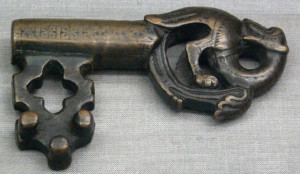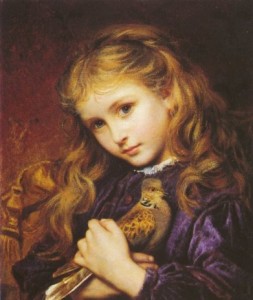 I’ve always thought that witchcraft is the best path for spiritual materialists, because we get to play with so many toys (only we call them tools). I have assembled most of the common implements of magic such as broom, cauldron, crystal ball, wand, athame, white handled knife, girdle, sword, chalice, pentacle necklace, and holey stone. I have materials to make a scrying mirror and staff, but have never gotten around to it. Still, I think the typical discussion of witch tools has some glaring omissions. One important tool seldom mentioned is the comb. Another is the distaff. At one point I speculated that our magical arsenal should be updated to include the key, such an important part of everyday life and filled with so much spiritual symbolism. Naturally when I began to research the subject I found that actual keys, as well as symbolic ones, have long held an important place in Pagan magic.
I’ve always thought that witchcraft is the best path for spiritual materialists, because we get to play with so many toys (only we call them tools). I have assembled most of the common implements of magic such as broom, cauldron, crystal ball, wand, athame, white handled knife, girdle, sword, chalice, pentacle necklace, and holey stone. I have materials to make a scrying mirror and staff, but have never gotten around to it. Still, I think the typical discussion of witch tools has some glaring omissions. One important tool seldom mentioned is the comb. Another is the distaff. At one point I speculated that our magical arsenal should be updated to include the key, such an important part of everyday life and filled with so much spiritual symbolism. Naturally when I began to research the subject I found that actual keys, as well as symbolic ones, have long held an important place in Pagan magic.
Keys had so many occult connotations that medieval magicians made great use of real keys as magic tools whenever any sort of opening, releasing, or letting go was wanted. Iron keys were buried with the dead in Ionia, to unlock the gates of the underworld. Germans kept a key in a baby’s cradle so the fairies would not be able to seize and kidnap the child.


